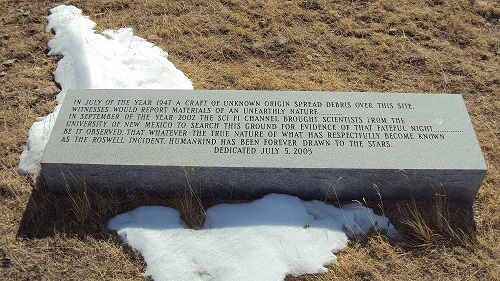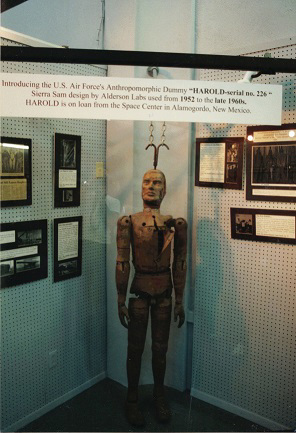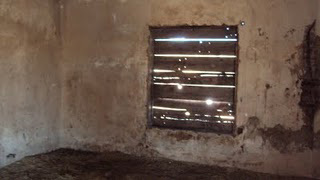The One Man Who Knew the Whole Story of Roswell: And I’m Not Exaggerating

Today’s article is another – and final – Roswell article. It’s very important because it focuses on the one man who knew the whole story. One of the primary reasons why the U.S. Air Force felt that the Mogul balloon scenario [to explain the Roswell affair] worked so well was because of the sheer scale of the arrays. They were gigantic clusters of balloons. In that sense, the Project Mogul balloons could, theoretically, have explained the presence of the huge debris field on the Foster Ranch – a field of debris that clearly could not have been caused by anything as insignificant as a small, solitary weather-balloon. It’s ironic, however, that one of the primary Roswell players – and who the U.S. Air Force spoke with, hoping he would add weight to their Project Mogul argument – completely failed to take the bait. On the matter of the nature of the debris, he would have nothing at all to do with the Mogul program. That man was one of the very few people that just about everyone who has studied the Roswell controversy agrees was definitely on-site when the materials were found and recovered: Sheridan Cavitt, formerly of the Counter-Intelligence Corps.

On May 24, 1994, Colonel Richard L. Weaver, USAF – who, at the time, was the Air Force’s Director of Security and Special Program Oversight – interviewed Cavitt at his, Cavitt’s, home. Mary, Cavitt’s wife, was also present throughout the interview. In its published report, the Air Force had some intriguing things to say about Cavitt and his comments on the Roswell event. There is an important reason why I have reproduced, below, a specific section of the Cavitt interview. That reason will become apparent imminently. The USAF said, in its 1994 report and prefacing the interview: “Cavitt is credited in all claims of having accompanied Major Marcel to the ranch to recover the debris, sometimes along with his Counter Intelligence Corps (CIC) subordinate, William Rickett, who, like Marcel, is deceased. Although there does not appear to be much dispute that Cavitt was involved in the material recovery, other claims about him prevail in the popular literature. He is sometimes portrayed as a closed-mouth (or sometimes even sinister) conspirator who was one of the early individuals who kept the ‘secret of Roswell’ from getting out. Other things about him have been alleged, including the claim that he wrote a report of the incident at the time that has never surfaced.”
In view of the above, it’s not at all surprising that the Air Force wanted to speak with Cavitt. The USAF report continues: “Since Lt. Col. Cavitt, who had first-hand knowledge, was still alive, a decision was made to interview him and get a signed sworn statement from him about his version of the events. Prior to the interview, the Secretary of the Air Force provided him with a written authorization and waiver to discuss classified information with the interviewer and release him from any security oath he may have taken. Subsequently, Cavitt was interviewed on May 24, 1994, at his home. Cavitt provided a signed, sworn statement of his recollections in this matter. He also consented to having the interview tape-recorded. “In this interview, Cavitt related that he had been contacted on numerous occasions by UFO researchers and had willingly talked with many of them; however, he felt that he had oftentimes been misrepresented or had his comments taken out of context so that their true meaning was changed. He stated unequivocally, however, that the material he recovered consisted of a reflective sort of material like aluminum foil, and some thin, bamboo-like sticks. He thought at the time, and continued to do so today, that what he found was a weather balloon and has told other private researchers that.
“He also remembered finding a small ‘black box’ type of instrument, which he thought at the time was probably a radiosonde. Lt. Col. Cavitt also reviewed the famous Ramey/Marcel photographs of the wreckage taken to Ft. Worth and he identified the materials depicted in those photos as consistent with the materials that he recovered from the ranch. Lt. Col. Cavitt also stated that he had never taken any oath or signed any agreement not to talk about this incident and had never been threatened by anyone in the government because of it. He did not even know the incident was claimed to be anything unusual until he was interviewed in the early 1980’s.” Cavitt told Colonel Weaver: “…I couldn’t swear to the dates, but in that time, which must have been July, we heard that someone had found some debris out not to far from Roswell and it looked suspicious; it was unidentified. So, I went out and I do not recall whether Marcel went with Rickett and me; I had Rickett with me. We went out to his site. There were no, as I understand, checkpoints or anything like that (going through guards and that sort of garbage) we went out there and we found it. It was a small amount of, as I recall, bamboo sticks, reflective sort of material that would, well at first glance, you would probably think it was aluminum foil, something of that type. And we gathered up some of it.”

Cavitt had more to say: “I don’t know where we even tried to get all of it. It wasn’t scattered, well, what I would call, you know, extensively. Like it didn’t go along the ground and splatter off some here and some there. We gathered up some of it and took it back to the base and I remember I had turned it over to Marcel. As I say, I do not remember whether Marcel was there or not on the site. He could have been. We took it back to the intelligence room in the CIC office.” The Air Force’s statement is notable for not just what it says, but also for what it specifically does not say. The USAF report makes it clear that in Cavitt’s opinion, what he saw and picked up was weather-balloon debris. From one, single balloon. Not more than one balloon. And definitely not an array of balloons. Given that the materials used in both weather-balloons and Mogul balloons were essentially one and the same, that meant the ball was still just about in the Air Force’s court: the Mogul theory still held water, and one of the last-surviving people who were at the crash-site was endorsing it. Well, no, he wasn’t. The exact opposite, actually. The most important document in this aspect of the Roswell puzzle is not the Air Force’s 1994 report, but its massive 1995 publication / behemoth, The Roswell Report: Fact Vs Fiction in the New Mexico Desert, a copy of which was mailed to me by Colonel Weaver when it was published, and which runs to more than 1,000 pages. Unlike the far slimmer 1994 report, the huge 1995 USAF document contains a full transcript of the interview between Colonel Weaver and Cavitt.
The report shows that Colonel Weaver asked Cavitt: “…when you went out and saw this material, there was no doubt in your mind that it was some sort of man-made material? And, you thought at the time was a weather balloon, some sort of balloon?”
Cavitt replied: “When I first saw it,” implying to the colonel that he knew immediately it was balloon debris. Now we get to the important part.
Colonel Weaver continued with his questioning and asked Cavitt how big the debris field was. Cavitt’s response: “Maybe as long as this room is wide.”
The colonel asked for clarification on Cavitt’s words : “So, twenty feet maybe?”
Cavitt said, as he pointed around the room: “Some here, some here, some here. No concentration of it.”
That all brings us to the biggest problem in this aspect of the overall Roswell debate: almost no-one of significance in the Roswell story disputes that the debris field on the ranch was expansive. Even the Air Force believed that. It still does, if asked. And, the fact that the field was so huge, and packed with debris, allowed the USAF to make a somewhat plausible case that it came from one of the military’s goliath-sized Mogul arrays. But, when talking to Colonel Weaver in 1994, Cavitt outright disputed the size of the field. It was, he said, just about “as long as this room is wide.” Cavitt’s testimony was potentially extremely important to the Air Force, as it could have helped bolster the idea that the materials came from Project Mogul. But, Cavitt’s words on the size of the area in which the material was found, were wholly inconsistent with what one would expect to see if Mogul was the culprit. Instead, what Cavitt described was consistent with just a small weather-balloon: not much wreckage and a very small area in which the materials were strewn about. On top of that, when Colonel Weaver brought up the matter of Project Mogul, Cavitt shot back: “Never heard of it.”

Perplexing is the fact that the USAF never addressed that one, notable inconsistency: how could Project Mogul have been the culprit when, according to Cavitt – who even the Air Force accepts was at the ranch in July 1947 with Bill Rickett – the amount of material found would have fitted comfortably in his and Mary’s living-room? In an August 1995 article titled “The Roswell Incident and Project Mogul,” and written for the Skeptical Inquirer, Dave Thomas said of the Mogul balloons, “Some of these flights consisted of very long trains containing up to two dozen neoprene sounding balloons, having a total length of more than 600 feet [italics mine].” Does that sound, to you, like something which could have comfortably fitted inside one room of the Cavitt home? Remember, the Cavitt’s living-room was not large. When asked about the size of the debris field, Cavitt told Colonel Weaver it was no longer than the width of the room in which the interview was then taking place. To which Weaver asked: “So, twenty feet maybe?” Cavitt made not a single attempt to dispute Colonel Weaver’s math.
There is something else, too: if Cavitt knew all along that what he, Marcel and Rickett saw and collected came from a weather-balloon, why then did Cavitt – or all three of them – not nip things in the bud and lay matters to rest before the “flying disc” statement was released to the media? The Air Force’s only theory on this issue goes as follows: “…it seems that that there was overreaction by Colonel Blanchard and Major Marcel in originally reporting that a ‘flying disc’ had been recovered when, at that time, nobody knew for sure what that term meant, since it had only been in use for a couple of weeks.” That statement does make some sense – after all, flying saucer hysteria was definitely growing, as it was only two weeks earlier that pilot Kenneth Arnold launched the era of UFOs. But, that Cavitt was so adamant that he immediately knew the material was from a weather-balloon still means he could have quashed everything before it erupted. Also, Colonel Weaver’s report makes it clear he was familiar with the testimony of the RAAF’s Provost Marshal, Major Edwin Easley, who had told Kevin Randle that, with respect to Roswell, he was sworn to secrecy. Easley died in 1992, but no attempt was ever made by the USAF to address his revelations.
Cavitt was not too bothered by this, as he made it clear to Colonel Weaver that he “was not sworn into secrecy ever about any of this stuff.” That, unlike Cavitt, Easley was adamant he had signed a secrecy oath is surely something that should have caught the attention of the USAF. And, more importantly, the Air Force knew Easley had made such a statement. That this important matter was not chased down can only be described as troubling. My view on all this? I believe that, just like John Keel, the Air Force was absolutely right to go looking for a balloon-driven program. As I see it, that is where all of the evidence points. But, also like Keel, the USAF got the wrong kind of balloon. It wasn’t a weather-balloon. It wasn’t a Fugo balloon. It wasn’t even one of the gargantuan Mogul affairs. As one of my original sources told me years ago: there is no better way to hide a classified balloon-based operation than by hiding it behind another classified balloon-based operation. Mogul, then, may have been the convenient fall-guy for a project that was far more controversial in nature; a project of sinister proportions and which was also inextricably linked to new and novel balloons flown in the skies of New Mexico in 1947.
Was the Air Force of 1994 hiding the history of a series of post-war human experiments behind something else, such as Mogul? Or, incredibly, was the truth hidden from the Air Force, too? Do I think the Air Force engaged in chicanery, lying and obfuscation? Did the Air Force make a legitimate search, only to find little at all? These are all important questions. Personally, I think the USAF legitimately went looking, but in doing so found nothing of a smoking-gun nature in the slightest. So, its investigators continued to search, finally focusing on Mogul, and coming to accept that without definitive documentation to make a cast-iron case, the whole thing was destined to remain a ufological equivalent of Jack the Ripper. Namely, an old mystery, one that was filled with intrigue, but which was lacking in a definitive answer. Perceiving quite correctly and astutely that coming up with no answer, at all, was unacceptable, the Air Force went with the only candidate that it thought made at least some degree of sense: Project Mogul. Based on the words of my sources, I am as certain as I can be that either (a) the relevant files were destroyed decades ago (which would explain why the Air Force of 1994 came up with nothing solid), or (b) the documentation was locked away – also decades ago – to prevent a dirty secret from ever leaking out and embarrassing not just the Air Force, but the entire U.S. Government, and even the President.

If the former is the correct scenario, we may forever be reliant on nothing more than the old memories of equally old people who are now nearly all gone. If the latter proves to be accurate, however, there is still a chance we might one day get our hands on the elusive proof: documents, photos, autopsy reports, and so on. If that happens, I predict the Air Force of 1994 will be shown to have been out of the loop, but not sinister conspirators. As for Cavitt, was he carrying out some kind of secret duty right up until the very end? Was he – even as late as the 1990s – still answerable to someone else? Was it the same person, or agency, Bill Rickett was still so concerned about crossing? Someone above the Air Force and the GAO? Someone concerned that, if the USAF kept pushing for answers, the hidden truth might still surface? Was Cavitt, by maintaining the weather-balloon scenario, even determined to keep the hidden facts out of the hands of Colonel Weaver? Quite possibly. Tony Bragalia notes of Cavitt: “His lawyer-son Joseph Cavitt said his father would get angry whenever the Roswell incident was brought up. He said his father had ‘issues’ and that ‘it was like having half of a father.’” Equally intriguing, Bragalia added that Cavitt “refused pain medication at the end of his life, afraid he would talk.”
Obviously, there was no need for Cavitt to avoid taking pain meds in case he spoke about as something as innocuous as a weather-balloon – or even a Mogul balloon, which was comprised of basically the same materials as a weather-balloon. To his dying day, it seems, Cavitt chose not to reveal the secret he kept for so long. It seems, however, there was a great deal that Cavitt could have said, had he chose to. For example, Kevin Randle interviewed Sheridan Cavitt on January 29, 1990. Randle notes of their exchange: “During that interview, [Cavitt] was only nervous once and that was when we began talking about the bodies. He looked at me, leaned forward and picked up a magazine, sat back, tossed the magazine to the table and asked ‘Bill Rickett tell you that?’”
Randle continued: “When I said, ‘No,’ Cavitt visibly relaxed.” Cavitt clearly knew the truth of Roswell. And he knew the truth was carefully hidden.




